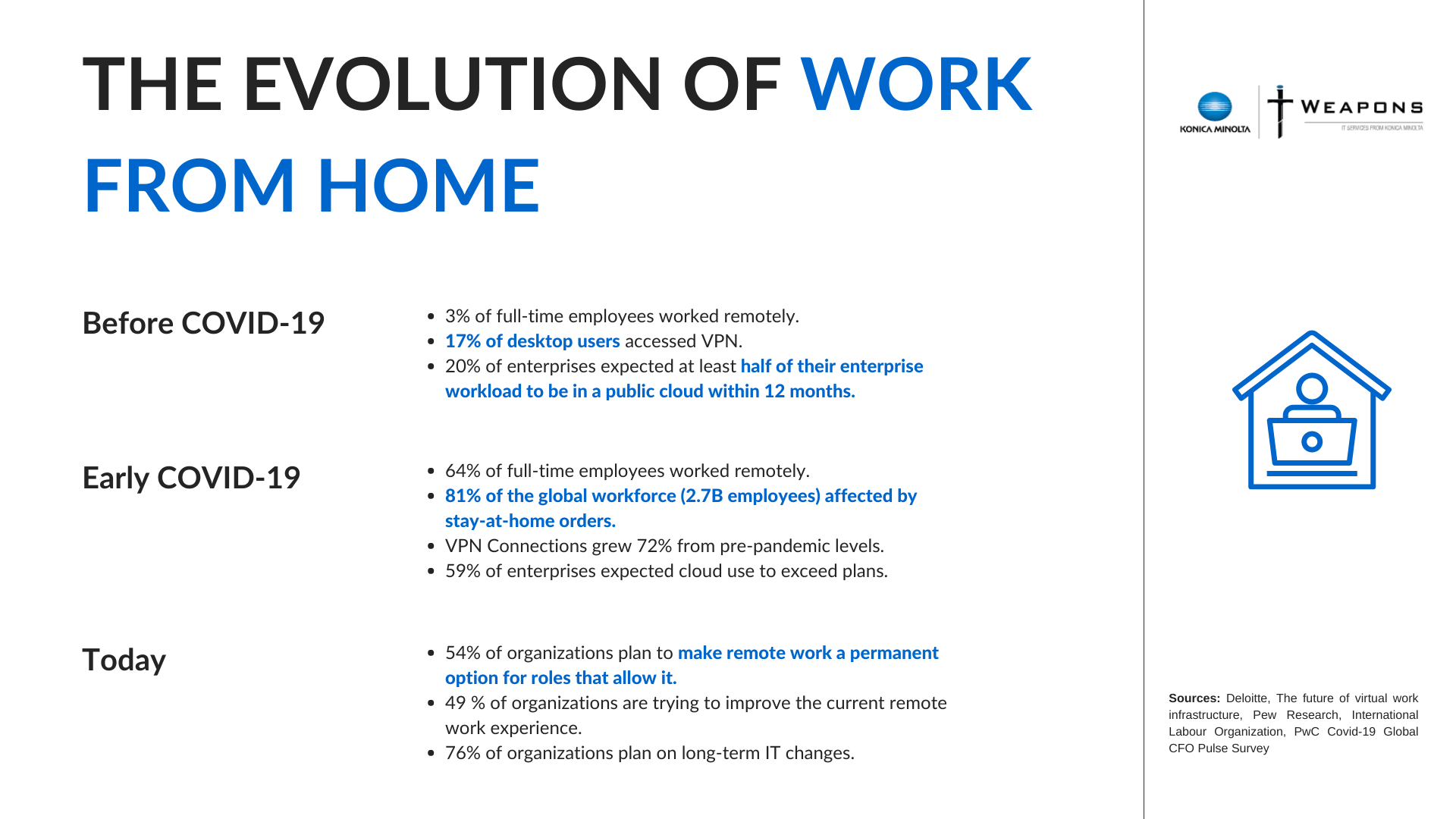What Do I Need to Step into The Freedom of Secure Workplace Communications?
Unless you’ve been living in a cave for several years, it’s clear that the nature of work has changed forever. The condensed burst of progress brought on by the pandemic forced many businesses into a reactionary “survival scramble.” In ways never before seen, leaders across all sectors had to rethink core functions and systems through the lens of digital-first transformation.
One key area of this scrutiny was the need for secure workplace communications. With so many not in the office and working from home, traditional collaboration methods (such as walking over to your coworkers’ desk) no longer made sense. So today, we’re going to look at a great debate: on-premises vs. cloud solutions. We’ll examine it from three angles: finance, technology, and strategy.
On-Premises Vs. Cloud Phone Solutions: What’s the Difference?
With the world the way it is today, it’s more important than ever that your workforce has the tools it needs to collaborate effectively. Before the pandemic, this could include several options for voice, messaging, video conferencing, and file sharing. A typical company might use a company phone line for calls, skype for external video conferencing with clients, teams for messaging, and Google Drive for file sharing. Below are some statistics documenting just how much the world of work has changed.

Unfortunately, that won’t cut it anymore. The modern workforce must have access to communication and collaboration tools over the internet to be effective. Aside from calling people over the internet with VoIP (Voice over IP), your staff needs a solution that brings their tools together. Enter Unified Communications (UC), which aims to combine voice, messaging, video conferencing, and file-sharing into one solution.
What does it mean when your phone system is on-prem (on-premises)? It means your business is responsible for all the resource costs for running your phones and that these are deployed on-site at your building. These costs include hardware, software, and other expenses like electricity.
Alternatively, cloud (also known as “hosted” or “managed”) systems are complete solutions that your company uses through the internet. With most modern Managed Cloud telephony solutions, you do not need a separate contract with a telecom company (e.g., Bell, Rogers, or TELUS), SIP trunks, or additional phone lines. This is because your phones connect directly through your existing internet connection.
Typically, the only purchase you need to make are desk phones, although some providers give the option to rent them. Many businesses are even forgoing traditional handsets and going soft-phone only, making all calls through their computer or mobile device. You have input over changes, but the provider does all the heavy lifting with updates, maintenance, and voice service.
Opex, Capex, and TCO: What’s the Cost of Secure Workplace Communications?
When considering a new telephony solution, one of the first questions people often ask involves the cost. Will switching to the cloud save my business money? The primary debate here is between a capital expense (Capex for short, on-prem) vs. an operating expense (Opex for short, cloud-based).
A Capex is an expense that your business gets when it buys something to create future benefits, like a phone system. On the other hand, an Opex is an expense required for your business’s daily operations – like your provider’s monthly fee. While they are both costs to your business, they are treated very differently for accounting and tax purposes.
With an on-premises solution, you typically buy or rent all the required assets to run your phone system. This purchase usually means a considerable upfront cost. Due to the rapid pace of technological advancement, it is also likely that these systems will eventually become obsolete. For these reasons, on-premises solutions are usually slower to implement, less “future-proof,” and require more resources to scale.
With a cloud-based telephone system, your provider has already made all the investments on your behalf. So besides a lower upfront fee, you don’t have to pay for any associated costs related to running the system, like cooling the telecom room. Good service providers will also have comprehensive upgrade roadmaps, consistently keeping systems up to date and warning you of any potential roadblocks. Finally, you can calculate your provider’s monthly fee as an Opex – which has tax benefits like write-offs.
So, what’s the recommendation here? Though it would depend on your needs, many businesses would have benefited from a cloud-related solution’s scalability and tax advantages. When considering the “work from anywhere” reality of today, it doesn’t make much sense to continue with on-prem – especially if not many staff are even on the premises. Unless your business can handle a large spike in your budget to refresh your solution every couple of years, you might do well to consider the predictable fee of a cloud-based phone system.
Technology & Control: Can My Team Manage the Phones?
Aside from financial restrictions, on-prem solutions also have weaknesses in the matters of security and bandwidth requirements. With all the recent security challenges in the news, it’s no wonder security is top of mind for many businesses today.
Ask your IT team: who wants to troubleshoot the phone system when it is down? If your team is like most, they’re already preoccupied with tickets. An overloaded IT staff doesn’t just mean slow response times: it can lead to a whole host of oversights, risks, and vulnerabilities.
Do you have the resources to hire additional IT staff to maintain your phone systems? In other words, can you steer the ship AND work in the engine room? Why not let your IT staff tackle other projects without having to worry about a voice phishing attack compromising your entire network? Their main concern should be securing, maintaining, and growing your IT ecosystem – not the daily management of an on-prem solution.
Cloud-based telephone systems allow you to do what you do best but handle the rest. Great service providers will have security plans in place that involve secure data centers, data encryption, tracking fraudulent activity, and network security. They’ll also work with your existing team to manage updates and proactive maintenance, which helps you avoid costly repairs and outages in the future. These options were born in the cloud, so they’re fully prepared for the risks that go with a digital-first workplace.
Strategy: Securing Your Future
Due to the extensive costs involved, on-prem solutions can’t easily change according to your needs after you’ve purchased them. While we would all like our businesses to grow, the COVID-19 pandemic placed a harsh reality on many companies. As a result, many are looking for maximum cost savings to scale back or pivot their business offerings completely. Cloud-based telephone systems are the perfect solution to this problem. Have a sudden reduction in staff? Removing them from the user list is as easy as clicking a button.
The reduced flexibility of an on-premises system also means diminished scalability. Even with vaccines and lower infection numbers signalling a transition back to work, the digital transformation brought on by the pandemic isn’t going away. As many employees expect a hybrid work model, businesses need a solution to support their needs.
When it comes time to invest and build, will your business have the available revenue streams, technologies, and capacity to scale? Or, will they all be tied into a solution that wasn’t meant for the new normal? Secure workplace communications are cloud-based solutions that allow you to save on costs and add new users with a button click – allowing for rapid scalability.
We’ve already established how cloud-based solutions support a modern workforce and adapt to your business through technology and cost-savings. Unless you’ve got a firm handle on this, meaning you expect your business to stay where it is, you might want to consider changing to a cloud-based solution.
Conclusion: Secure Workplace Communications Means Stepping into Freedom
It’s clear that in today’s world, digital transformation is here to stay. Leaders are scrutinizing every dollar spent. Workforces are more distributed. IT teams are dealing with more risks today than they ever have before. As a result, being lean, flexible, scalable, and secure is more critical than ever.
Instead of adapting an on-prem solution that was never meant for this new reality, why not switch to a cloud-based solution that was born for it? To quote the title of leadership coach Marshall Goldsmith’s book, “What Got You Here Won’t Get You There.”
Ready to free yourself from your on-prem solution? Click the link below to see firsthand how our team can help you step into the future of communications.






